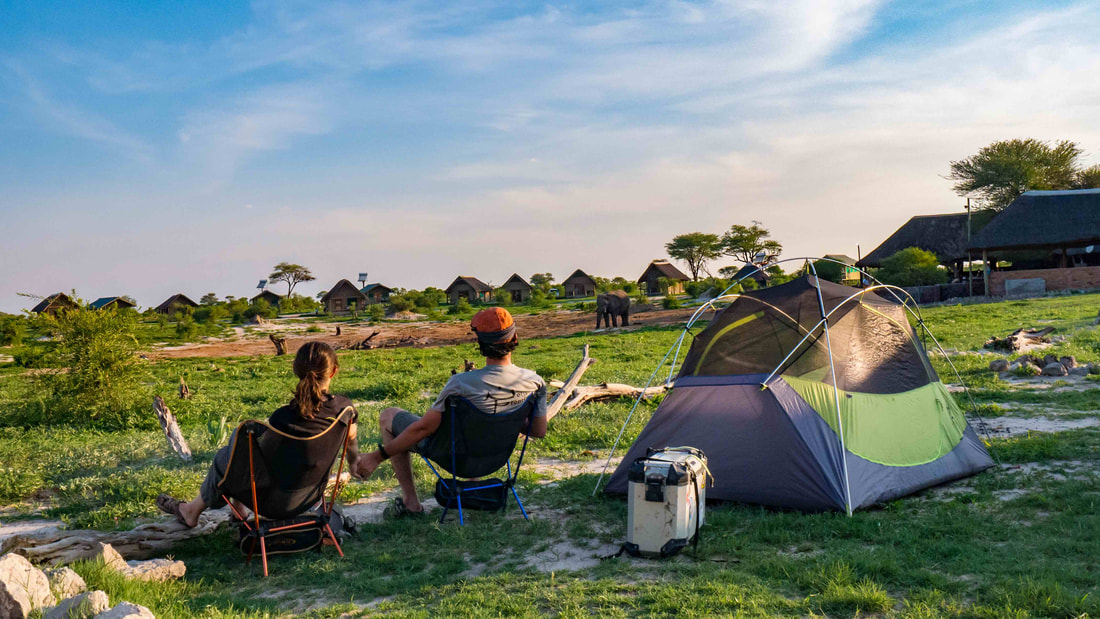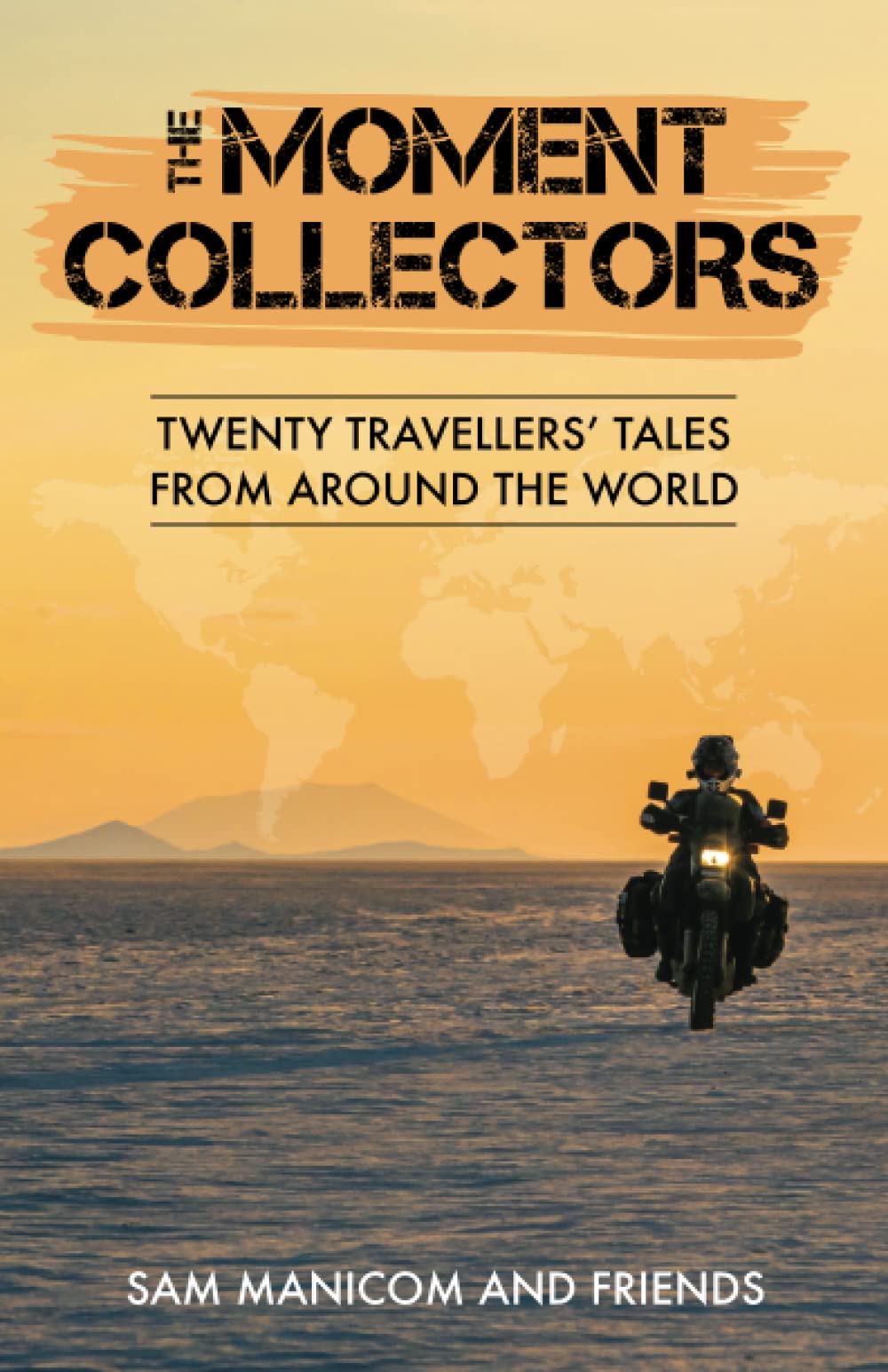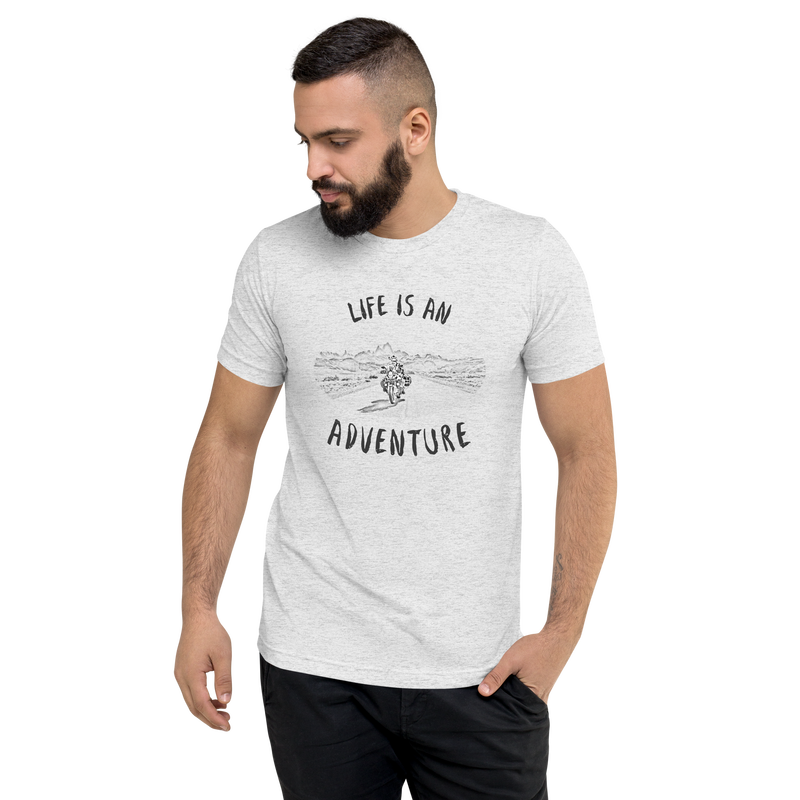By MarisaWe have nothing against Windhoek, the capital city of Namibia, but when you’re stuck there for weeks on end because your motorcycle is broken, all you can think about is leaving. We had unfortunately snapped our monoshock (rear suspension) when we’d first entered Namibia. We waited for two weeks for our new shock to arrive from Austria, and when it did, we packed up the bike, got on the road, and headed to Botswana when we realized something horrible: the monoshock was not the only thing that needed replacing. The shock’s spring was also damaged, and we would have to turn back. That meant it would be another week and a half of waiting in Windhoek and paying for repairs and living expenses before we could continue with our African travels. This was very depressing for us, and it certainly wasn’t a great beginning to the holiday season. But finally, the new shock spring came, and with fingers crossed that nothing else was wrong, we were ready to go. Looking back, we had a blast in Namibia, minus all the bike trouble. We saw starkly beautiful desert landscapes (Sossusvlei), we came face-to-face with hundreds of stinky seals (Cape Cross), we carpooled with an ochre-covered Himba woman and her baby, and most of all, we got to see lions, zebras, giraffes, and wildebeest in the wild. Namibia was amazing. But after being stuck without our motorcycle in Namibia for almost a month, we wanted nothing more than to get to a new country. So we couldn't be more excited for the next step on our trajectory: Botswana. We’ve wanted to visit Botswana ever since we watched The No. 1 Ladies’ Detective Agency on HBO, a series based on the books by Alexander McCall Smith. The show made Botswana out to be an African paradise of giraffes and elephants roaming the landscape, friendly people greeting you everywhere with big smiles, and it seemed to be run by a peaceful, stable government. So we were curious to find out if this was all true. We crossed into Botswana through the Kalahari desert, and not even an hour in, we saw one of our motorcycle travel friends on the road: Emiliano. He’s a fellow American riding on a BMW 650, and we’d first met him in South Africa and traveled the Wild Coast with him. And now he was in Botswana, just like us, so we decided to travel together. We’d come into Botswana in the northern half near the Okavango Delta where most of the wildlife action is. Unfortunately, these sites are not accessible by motorcycle (due to motorcycles not being allowed into National Parks for safety reasons… like lions…), so we had to be a bit creative with where we went and what we saw. Our first destination was an area east of Maun called Planet Baobab, which, as you guessed, is famous for its baobabs. Baobabs are trees, but not just any tree. They’re ancient and unique trees with girthy trunks and stubby branches that you often see in pictures of Madagascar. We weren’t going to Madagascar, so I just assumed we wouldn’t be able to see any of these trees, but it turns out there are some on the mainland of Africa as well, especially in this region of Botswana. And they are some of the largest, oldest, and most impressive specimens of baobabs on earth. You might be thinking, “What’s so great about funny looking trees?” Well, as we made our way over there along boring stretches of highway, sweating in the heat of the Botswanan summer, I was thinking the same thing. Sure, they’re big, but we’d seen the Sequoias in California. So would it be worth it to come all the way out here just to see trees? But after seeing my first baobab, I immediately changed my mind. There’s something about baobabs that’s magical: they stick up huge and mighty right out of the flat shrub land like a beacon to all people and animals to come for shelter, for shade, for a home. Some of these trees are over 2,000 years old, and as you walk under them, you feel the coolness of its immense shade, you touch its elephant-hide-like bark, you smell the fragrance of the summer sage grasses growing under your feet. And you know that this is where people have congregated since before white settlers ever came, since even before the Bantu people migrated from the north. This tree was here giving shade and refuge to the original bush people who hunted antelope and lions barefoot and with nothing more than spears. And to this day, you feel as if not much has changed around this tree. Antelope have become cows and goats with bells hanging around their necks, creating a wind-chime music to the place. And now there are paths winding through the landscape where 4x4’s and crazy motorcyclists try to push their way through the sand. But those are the only differences. The elephant dung is still fresh all around, the vultures still make their nests high up in the branches, and the air still smells of a humid heat carrying the scent of animals and flowers, just like it always has. We spent a day riding down the backroads around Gweta, doing nothing more than searching for baobabs. We’d keep our eyes out for the silhouettes of enormous trunks, and then we'd weave our way through the thorny brambles until we’d park under the shade, take off our sweat-soaked jackets, and have a snack next to the baobab. It was a perfect day, even though it was a little hot out (ok, it was a lot hot out), but I will always associate Botswana with our search for the majestic baobab trees. After Planet Baobab, the three of us headed off to another famous campground: Elephant Sands. This place is built around a watering hole where elephants like to hang out, and even though they’re wild, the elephants are used to people camping there and they wonder around like they’re just another patron of the establishment. It’s truly incredible to be that close to elephants, but I also gained some respect for earth’s largest land animal as I witnessed the lengths at which the place had to go to make sure that both people and their buildings were safe from the elephants’ destructive behavior. Rebar was sticking up out of the ground so elephants couldn’t walk over it, the bathrooms were encircled in concrete walls, and signs were posted everywhere saying, “Don’t leave the water running or you could endanger your life." It turns out that elephants seek out water like a backhoe digs through the earth, and they will topple walls, pull up piping, and trample anything in their way to get to it. So just like how you have to keep your food protected up in trees when camping around bears, when camping around elephants you have to make sure your water supply is guarded in a fortress-like facility. And then just hope they don’t accidentally walk over your tent at night. The night that we spent there we were suddenly awoken by a roar of a monster. It was like the belching of a bear mixed with the low bass of a 90’s rap song. If I was a sound editor for the Jurassic park movies, I would definitely use these elephant sounds for my T-Rex, because they are deep and freaky noises. It was so much more than your typical Dumbo trumpeting, because at night, the elephants grumbled and groaned to each other, sometimes in anger as two young bulls clashed their tusks together in a fight. The sounds almost vibrated the earth beneath my feet with their low reverberating voices. It was like out of horror movie. Of course Tim and I both sat up in our tent at the sounds, and through the darkness we could see a massive elephant just fifteen feet away from us. We held our breath as he lumbered past and headed to the waterhole, where we could make out the shadows of ten more elephants, including some babies. So we headed over to the main building and got a great view of the waterhole, and spent an hour or so watching the elephants slurp up the water through their trunks, and protect their little cute babies under their legs. I have to say, this was one of our most memorable experiences of our lives. The next day we headed to our last destination in Botswana: a town in the northeastern tip called Kasane. It’s right on the edge of Chobe National Park where the Chobe River meets the Zambezi River at the confluence of Namibia, Zimbabwe, and Zambia. From Kasane, we were able to join a Chobe river boat tour where we got to see water-loving animals that we didn’t see on our safari in drier Namibia, such as hippos, crocodiles, and water buffalo. We were extremely lucky during our tour because we got to see a mother hippo give birth. Now as exciting as that sounds, because hippos give birth under water, there wasn’t actually much to see, but we did notice a little pink hippo head pop up behind her. And then he twitched his tiny ears, took a snotty breath of fresh air, and opened his mouth to make a big yawn. It was absolutely adorable. Besides a Fish Eagle, a family of Striped Mongooses, and a whole group of Chacma Baboons, we also got very close to a few Nile Crocodiles. The ones we saw were small compared to how large they can be (18 feet long, 6 meters!), but their reptilian eyes that never blink still gave me the chills. Needless to say, we were not allowed to put our hands into the water. Ever. There are simply too many crocodiles out there. After a couple more days relaxing poolside in Kasane, we knew our time in Botswana was coming to an end. Not only did the country meet all our expectations from the No. 1 Ladies' Detective Agency show, but it exceeded them. And next up, we journey into Zambia to see the great and wonderful Victoria Falls! So stay tuned. This holiday season, we have too many people to thank. Ruan and Duard who helped us get back on the road again in Windhoek, and everyone who has donated and bought our books, stickers, and photography. We send you good wishes and a Happy Holidays from Africa! |
Follow UsRide with us from Chicago to Panama!
2Up and Overloaded Get inspired by the tale that started it all:
Maiden Voyage 20 author's tales of exploring the world!
The Moment Collectors Help us get 40 miles further down the road with a gallon of gas!
Become a Patron for early access to our YouTube Videos!
Subscribe to our YouTube Channel!
Subscribe to our Blog by Email
|
2Up and Overloaded
Join our clan of like-minded adventurers...
Proudly powered by Weebly
Designed by Marisa Notier







































